How much does seawater desalination cost per gallon?
Seawater desalination is one of the important ways to solve the problem of freshwater resource shortage, but its cost has always attracted much attention. So, how much does sea water desalination cost per gallon? Before answering this question, let's first understand what is desalination and how does it work?
The principle of seawater desalination is the process of removing salt from seawater through membrane separation, distillation and other technologies, turning it into fresh water that can be drank or used for agriculture and industry. The main purpose of this technology is to solve the problem of shortage of fresh water resources, especially in arid areas or island countries where there is not enough supply of fresh water resources.
2 Methods of Desalination:
There are currently two main methods of seawater desalination technology: distillation and reverse osmosis. Among them, reverse osmosis technology is currently the most widely used.
● Distillation: Distillation is done by heating seawater, causing it to evaporate and condense into fresh water, while leaving the salt in the original water. This method includes different technologies such as multi-stage flash evaporation and multi-stage distillation, but it usually consumes higher energy and is therefore less used in some specific occasions.
● Reverse Osmosis Method: Reverse osmosis uses a semipermeable membrane (usually a polyethersulfone or polyacrylate membrane) to separate salt and other impurities in seawater. Seawater is pressurized and injected into a reverse osmosis membrane system, where water molecules can pass through the membrane but salt ions cannot, creating fresh water. The reverse osmosis method is simple to operate, has low energy consumption, and can adjust the water production volume as needed, so it is the most widely used in modern seawater desalination plants.
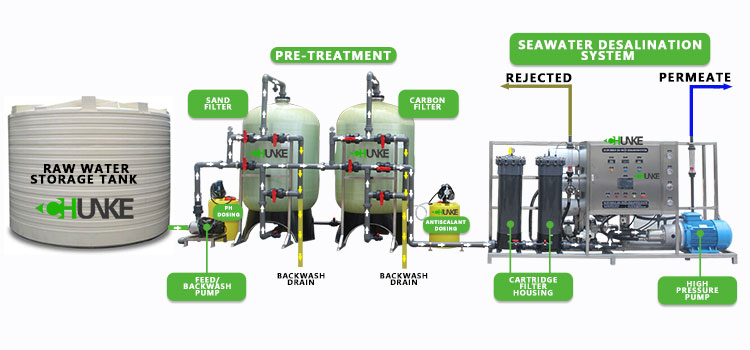
Desalination Price Per Gallon
Many factors influence the cost of sea water desalination:
The cost of seawater desalination is not static, but is affected by many factors. Specifically, the project details, geographical location, scale, technology used, energy costs, and plant life considerations will all affect the cost of seawater desalination. Therefore, the cost per gallon of seawater desalination will vary from project to project.
Estimated cost range:
Although the cost factors for sea water desalination are complex, general estimates suggest that the cost of sea water desalination ranges between $5 and $10 per 1,000 gallons. This means that the cost per gallon of seawater desalination is approximately $0.005 to $0.01. This range takes into account the influence of various factors, but is still only a rough estimate. Energy consumption is the key that directly determines the cost of seawater desalination. Over the past 40 years, with the improvement of technology, the energy consumption index of seawater desalination has been reduced by about 90%, and the cost has been greatly reduced. From an economic and technical perspective, the unit cost of seawater desalination, especially brackish water desalination, is actually very competitive.
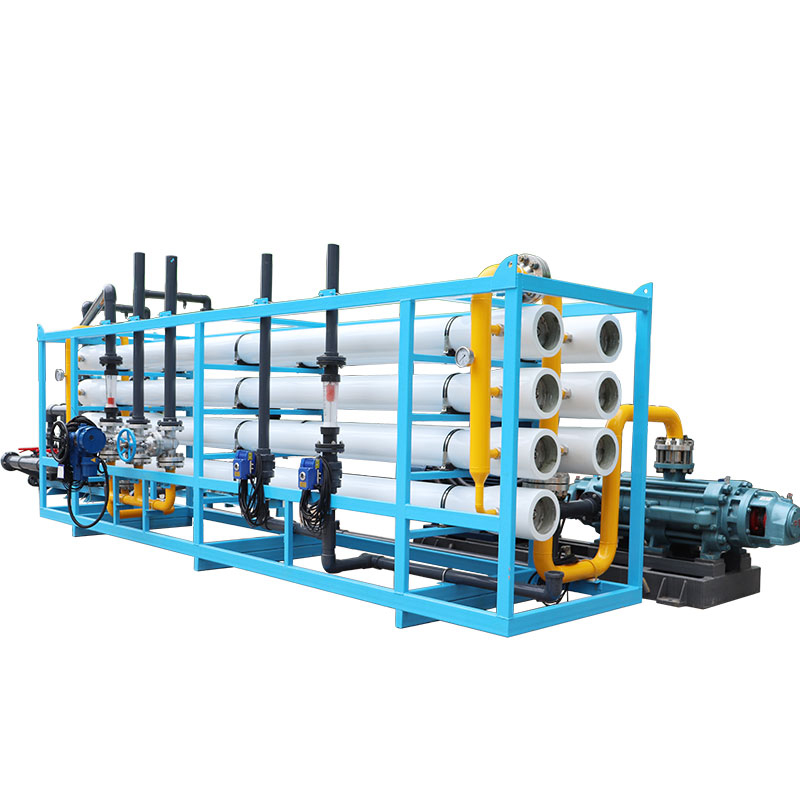
What are the factors that affect the cost of seawater desalination?
Now that we understand the cost estimate of seawater desalination per gallon, let’s dive into the specific factors that affect the cost of seawater desalination.
Project details and location:
First, the specific details and location of a sea water desalination project will have a significant impact on costs. For example, land costs, labor costs, and water availability for the construction of sea water desalination facilities will vary in different regions, thus affecting the overall cost of the project.
Size and technology used:
Secondly, the size of the project and the technology used are also key factors affecting the cost of seawater desalination. Generally speaking, the larger the scale, the more advanced the technology used, and the higher the efficiency of the seawater desalination project, the cost will be relatively lower. Therefore, scale and technological innovation can reduce the overall cost of seawater desalination.
Energy cost and plant life considerations:
Finally, energy costs and plant life considerations will also have a significant impact on seawater desalination costs. The seawater desalination process requires a large amount of energy support, so the energy cost directly affects the overall cost of seawater desalination. In addition, the life span of the plant will also affect investment and operation and maintenance costs, which will in turn affect the cost of seawater desalination.

How Much Does it Cost to Build a Desalination Plant?
Desalination Plants Cost to Build: On May 26, 2020, the Israeli government announced that IDE Corporation won the bid for Israel's largest seawater desalination plant — the Sorek Phase II Seawater Desalination Project. IDE Corporation won the bid for the Sorek Phase II reverse osmosis plant with a bid of $1.5 billion, with a design capacity of producing 820,000 tons of water per day. The price for each ton of water is 1.45 Israeli Shekels, equivalent to 0.42 US dollars. The average cost per gallon of desalination is $0.0016. The tailor-made process of IDE Technology Company has once again achieved a self-breakthrough, creating an unprecedented low water price for seawater desalination reverse osmosis process in the world.
●After the completion of Solek Phase II reverse osmosis water plant, it will provide 200 million cubic meters of drinking water to the entire country of Israel every year. By then, all the drinking water in the entire country will come from seawater desalination.
●Israel’s three major desalination plants - Ashkelon Desalination Plant (396,000 cubic meters/day), Hydra Desalination Plant (525,000 cubic meters/day) and Sorek Phase I Desalination Plant (624,000 cubic meters /day) are designed, constructed and operated by IDE Company.
Additionally, according to a report from the China Institute for Marine Development Research, one of the world's largest reverse osmosis desalination plants was commissioned in Saudi Arabia in 2022. The plant has a capacity of 600,000 cubic meters per day and has been recognized by the Guinness World Records as one of the world's largest reverse osmosis seawater desalination facilities. The plant operates with high efficiency and is one of the most environmentally friendly seawater desalination plants in the world, with minimal electricity consumption and noise levels during daily operations. The investment cost of the plant is 2.6 billion Saudi Riyals, approximately $690 million USD.
Comparing the Build Costs of 15 Seawater Desalination Plants
Factors Affecting Desalination Plant Costs: Building desalination plants on a global scale is a complex task influenced by various factors. From the year of construction, geographical location, geological conditions, proximity to the ocean, scale of desalination, to the desalination technology employed (such as Multi-Stage Flash (MSF) and Reverse Osmosis (RO)), each factor significantly impacts the construction costs. Table 1 below provides a statistical overview of the construction costs of 15 desalination plants worldwide. By comparing different countries, desalination technologies, and scales from 2005 to 2023, we can discern trends in construction costs and the respective weights of various factors in these costs. This case study will contribute to a better understanding of the complexity of desalination engineering and provide valuable insights and guidance for future similar projects.
Table 1: Desalination Plant Build Cost Case Study (Unit: 10^4 Cubic Meters/Day)
| Project Name | Area | Scale (10^4 Cubic Meters/Day) | Process Technology | Completion Time/Year | Desalination Plants Cost to Build |
| Shuaiba 3 | Mecca, Saudi Arabia | 128.2 | MSF、RO | 2019 | US$821 Million (Phase 3 Project) |
| Sorek | Tel Aviv, Israel | 117.2 | RO | 2023 | US$1.5 Billion |
| Ras Al-Khair | Saudi Arabia, Hasa | 103.6 | MSF、RO | 2014 | US$1.76 Billion |
| Taweelah | Abu Dhabi, United Arab Emirates | 90.92 | RO | 2022 | US$890 Million |
| JWAP | Jubail, Saudi Arabia | 80 | MED | 2010 | US$800 Million to US$1 Billion |
| Umm Al Quwain | Umm Al Quwain, United Arab Emirates | 68.2 | RO | 2022 | US$797 Million |
| Jebel Ali M | Dubai, United Arab Emirates | 63.6 | MSF | 2018 | US$400 Million |
| Jubail 3A IWP | Jubail, Saudi Arabia | 60 | RO | 2022 | US$650 Million |
| Rabigh 3 | Rabigh, Saudi Arabia | 60 | RO | 2021 | US$690 Million |
| Magtaa | Oran, Algeria | 50 | RO | 2014 | US$495 Million |
| Hadera | Israel Hadera | 46.2 | RO | 2010 | US$381 Million |
| Tuas | Singapore | 45.45 | RO | 2016 | US$217 Million |
| Shuqaiq 3 | Jizan, Saudi Arabia | 45 | RO | 2021 | US$600 Million |
| Yanbu 4 | Saudi Arabia, Al Madinah Province | 45 | RO | 2023 | US$880 Million |
| Sulaibya | Kuwait | 37.5 | MSF | 2005 | US$377 Million |
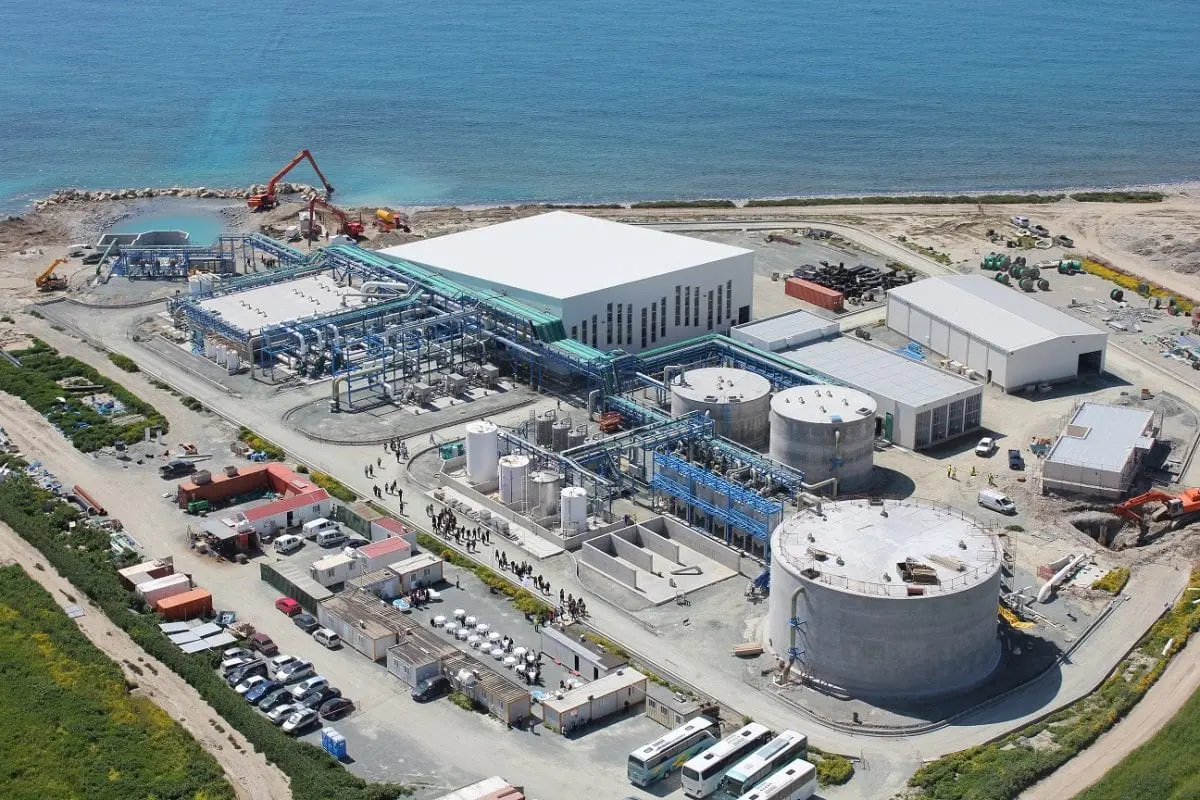
Ranking and Detailed Introduction of the World's 5 Largest Desalination Plants
1. Ras Al Khair, Saudi Arabia – 1,036,000 Cubic Meters/Day
Considered the world's largest desalination heavyweight, Ras Al-Khair is a hybrid project that uses both thermal multi-stage flash (MSF) and reverse osmosis (RO) technologies. The site, located 75 kilometers northwest of Jubail, serves Riyadh and also has a significant power generation component with a capacity of 2,400 MW.
The main contractor for the construction of the plant is Doosan and its consortium partner Saudi Akroden, with Poyry serving as a consultant on the project. Ras Al-Khair began operations in 2014 but was sold in 2017 by Salt Water Conversion Company (SWCC) to initiate a privatization program and sell off its assets.
2. Taweelah, UAE – 909,200 Cubic Meters/Day
Although the project is still in its infancy, upon completion Taweelah will place the UAE in the top three. Currently, the project has received bids from seven consortiums, including Saudi Arabia’s ACWA Power Company, a consortium composed of France’s Engie and Marubeni, Japan’s Sumitomo and Veolia Middle East East), a consortium composed of Spanish company Valoriza Agua and UAE company Utico FZC, and the Islamic Development Bank Infrastructure Fund II (IDB Infrastructure Fund II).
The minimum production cost of seawater desalination in this project is set at 8.26 UAE dirhams (approximately US$2.25) per 4.55 cubic meters. The wastewater treatment plant will use reverse osmosis technology and has a daily desalination capacity of 909,000 cubic meters. According to reports, more than 40 companies initially expressed interest in the Taweelah bid. Once completed, it is expected that the proportion of desalinated seawater produced through reverse osmosis technology in the country will increase from the current 13% to 30% by 2022.
3. Shuaiba, Saudi Arabia – 880,000 Cubic Meters/Day
Saudi Arabia's second-ranked Shuaiba 3 development is located 90 kilometers south of the historic city of Jeddah. ACWA Power selected a consortium of Germany's Siemens AG and Doosan Corporation to provide project engineering, procurement and construction of the power plant. According to ACWA Power, one expansion project at the plant has been completed and another is in the final stages of construction, adding a total of 400,000 cubic meters per day of reverse osmosis capacity. Upon completion in the first half of 2019, Shuaiba will eventually surpass Ras Al Khair as the largest operating desalination plant, with a total capacity of 1,282,000 cubic meters per day. The development is part of a wider plan by the Water and Electricity Corporation (WEC) to significantly increase the country's desalination capacity.
4. Saudi Arabia JWAP - 800,000 Cubic Meters/Day
The Jubail plant is one of the most prominent integrated hydropower facilities (IWPP) in the world and is a joint venture between Marafiq, Saudi Electricity Company (SEC), Hydropower Holding Company and the SGA Marafiq consortium consisting of ENGIE, Gulf Investment Company and the ACWA Power Project . Commercial operation will begin at the end of 2010, with a planned operation period of 20 years. JWAP is a dual-purpose facility that includes combined cycle-based power and multi-effect distillation (MED) water production.The plant is divided into four operating blocks, three of which are power and desalination blocks, and the fourth block is a "pure power" block with three gas turbines and a reheat condensing steam turbine.
The plant is owned by Jubail Water and Electricity Company (JWAP). The off-taker is Marafiq Water and Supply Company (Tawreed), a wholly-owned subsidiary of Marafiq, which purchased all plant output through a 20-year power and water purchase agreement (PWPA) with JWAP.
5. (UAQ) United Arab Emirates – 682,900 Cubic Meters/Day
The Independent Water Project (IWP), located on the border of the emirates of Umm Al Quwain and Ras Al Khaimah, is one of the largest pure-play reverse osmosis plants on the market. UAQ is expected to enter commercial operations in the third quarter of 2022 and will be delivered on a build, own, operate and transfer (BOOT) basis as part of a 35-year Water Purchase Agreement (WPA) with the Federal Electricity and Water Authority (FEWA). off-takers.
The US$797 million project is being built by Chinese partner Gezhouba Group International Engineering Co., Ltd., with SIDEM-Veolia providing a US$255 million engineering and procurement contract. ACWA Power will own 40% and Techton Engineering and Construction will own 35%.
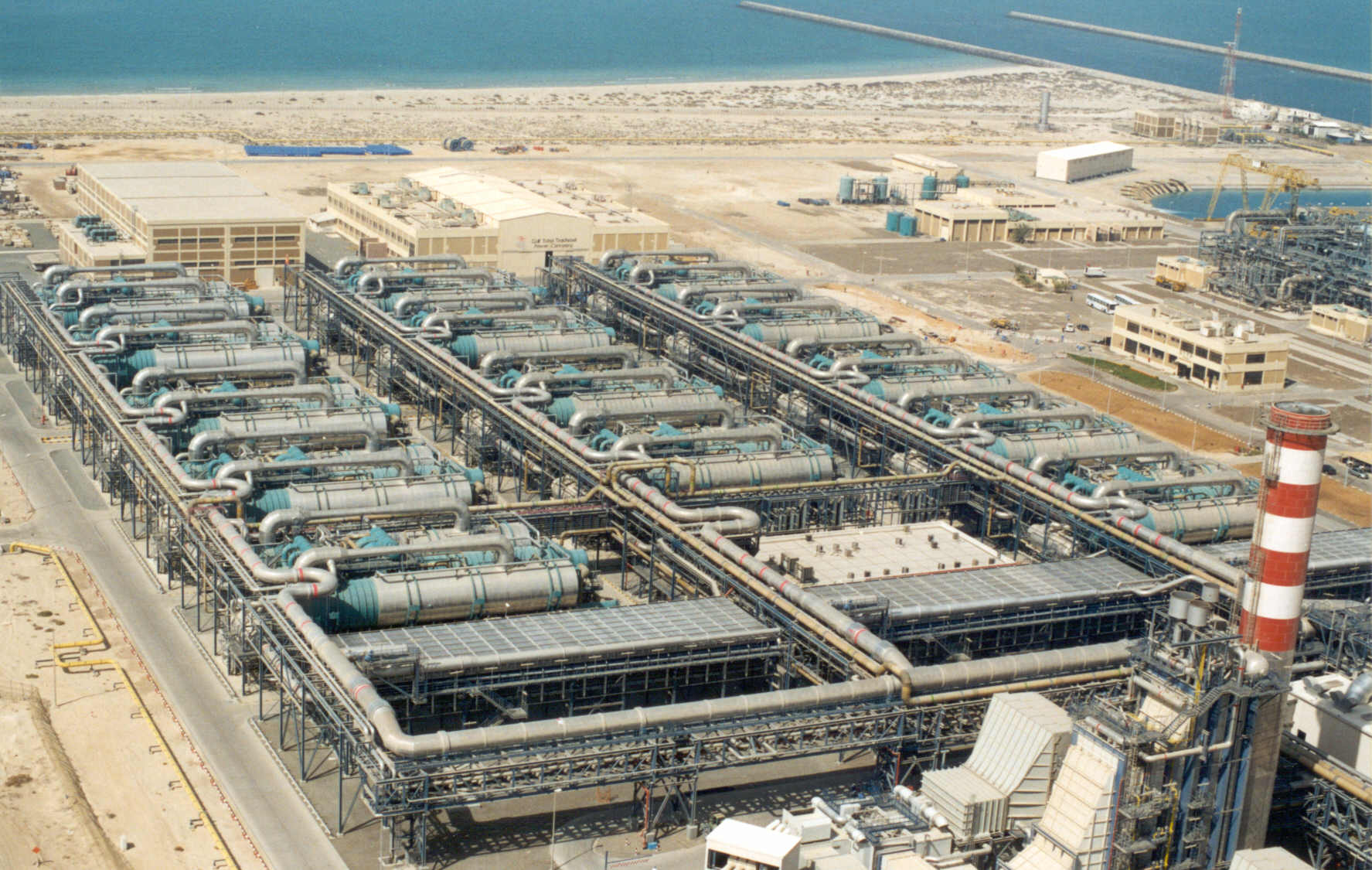
How is seawater desalination technology used around the world?
Seawater desalination technology has been widely used around the world and plays an important role in solving the problem of freshwater resource shortages and ensuring the safety of water for human life. The following is the global application of sea water desalination technology:
Middle East: Due to the scarcity of fresh water resources in the Middle East, many countries adopt seawater desalination technology to meet the growing demand for water. Countries such as Saudi Arabia and the United Arab Emirates have established large-scale seawater desalination plants, which solve most of the drinking water and industrial water needs through sea water desalination technology.
Singapore: As a city-state with no natural freshwater resources, Singapore has adopted sea water desalination technology to address water shortages. Singapore's sea water desalination plant uses advanced technology to become one of the country's main sources of drinking water.
Australia: Australia has also established multiple seawater desalination plants in Western Australia, South Australia and other places to solve the problem of fresh water supply in local arid areas. Seawater desalination technology provides stable and reliable freshwater resources to these areas.
China: Chinese coastal cities such as Shanghai and Guangzhou are also actively promoting seawater desalination technology to cope with the increased water pressure caused by urbanization and industrialization. Seawater desalination plants have become an important supplementary water source in these cities, ensuring the water safety of urban residents.
Other countries: In addition to the above-mentioned countries and regions, sea water desalination technology has been widely used around the world. Many island countries, coastal cities, and arid areas are using sea water desalination technology to solve water shortage problems and promote sustainable economic and social development.
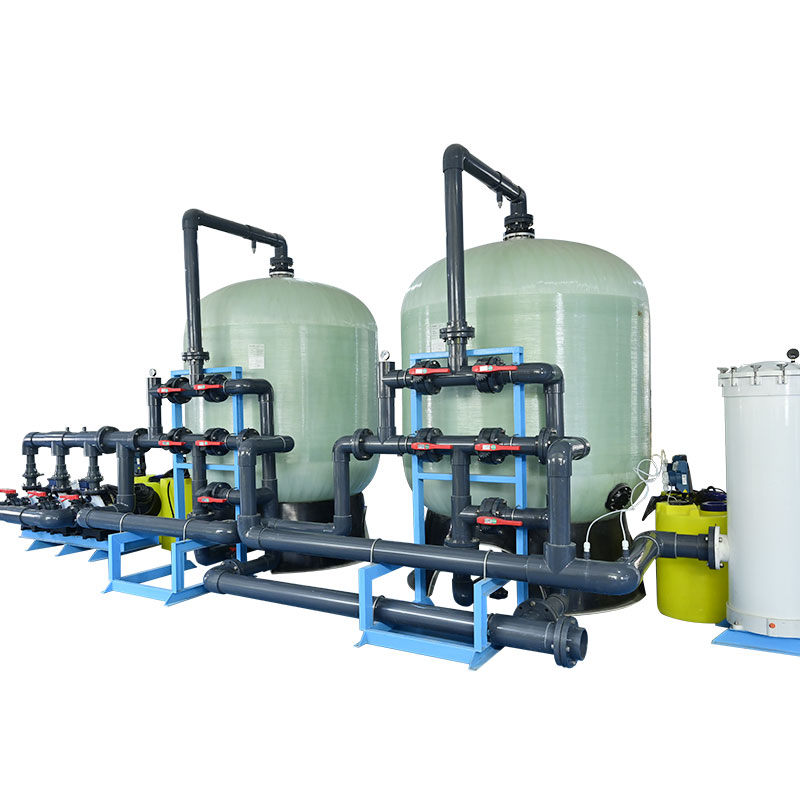
In general
Sea water desalination technology has been widely used around the world and plays an important role in solving the problem of fresh water resource shortage and ensuring human water safety. With the continuous advancement of technology and the promotion of applications, sea water desalination technology will continue to contribute to global water resources management and sustainable development.






